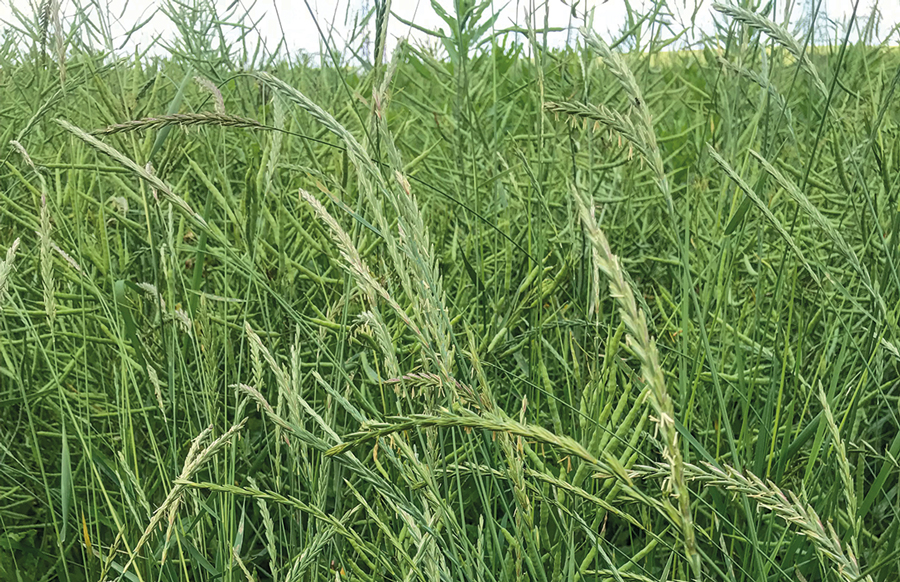Grass Weed Action – Couch
5th July 2019
It may not be the national problem it once was, but we ignore couch grasses at our peril, stresses Barrie Hunt in the next in our series of specialist articles.
It may not be the national problem it once was, but we ignore couch grasses at our peril, stresses Barrie Hunt in the next in our series of specialist articles.
Even though couch is no longer the immense challenge it was before the introduction of Roundup, the latest grower research shows it continues to be problematic on 10 per cent of the UK winter cereals area.
This, and the huge damage we know the five perennial species generally referred to as couch can do, makes it vital we don’t let them off the hook. All the more so because common couch, black bent, creeping bent, onion couch and creeping soft-grass are widespread in rough grassland, hedge bottoms and field margins, and can thrive in conservation headlands, buffer strips and other environmental areas.
The fact that they are encouraged by reduced tillage, so easily spread by cultivations, particularly difficult to control in the spring and especially competitive in more open crops adds to the threat they continue to pose.
Like the black-grass, bromes and Italian ryegrasses of this world, couch grasses are best controlled by the right combination of autumn cultivation and pre-planting glyphosate. But, as perennials which mainly spread through roots and stems rather than seed, our approach needs to be rather different to the annual grass weeds with which we are most familiar these days.
Indeed, the most effective stubble control programmes for annual weeds may be the least effective for perennials, and different couch species may require different treatment strategies for the greatest success.
This makes it crucial to tell them apart from annuals through careful summer identification when they are flowering above cereal canopies. Knowing which species of couch we are dealing with is important too so we can best match our treatment to its particular biology.
While the plough can be useful to bury couch grasses to a depth from which they struggle to emerge, we need to be especially adept with our ploughing and use skimmers well enough to completely bury every part of them to at least 20cm. And, of course, we have to avoid bringing viable roots and stems back near the surface by repeated ploughing over the next few years.
We also need to be aware that ploughing poorly or too shallow will achieve little and may make future control more difficult by distributing roots and stems throughout the soil profile. It is also unlikely to be effective at all with onion couch.
In the same way, a single ill-timed cultivation can be worse than none as it chops and spreads the rhizomes, stimulating new growth and increasing plant numbers. So, if we want to control couch grasses mechanically, we almost certainly need repeated cultivations over a hot, dry summer to effectively desiccate the rhizomes.
That’s why autumn glyphosate has to be our mainstay here. Providing, of course, we use it at the most appropriate time and in the best way.
Pre-harvest best
Pre-harvest OSR or cereals applications are the best, targeting couch grasses at just the time their translocation is being re-directed downwards to store nutrients in the rhizomes ahead of winter. This gives the most effective kill of the entire root system while allowing us to set up a stale seedbed for annual grass weed control ahead of drilling with an immediate post-harvest cultivation.
Otherwise, we need to leave stubbles uncultivated for 6–8 weeks so the couch can regrow enough leaf for the best glyphosate activity; something that is bound to interfere with our annual grass weed management unless we’re planning to drill either very late in the autumn or the next spring. Cultivating stubbles prior to spraying too will only spread damaged fragments of couch roots and shoots in the soil to emerge later and escape pre-planting spraying.
It is important we use the right rates of the most active glyphosate formulations with tough perennials like couch. However, with these we can continue spraying well into the autumn even if it starts to get frosty as long as the leaves regain their turgidity and are dry.
As Roundup technical manager, Barrie Hunt co-ordinates the national on-line resource (www.monsanto-ag.co.uk/grassweed-action) providing the best information and guidance for growers keen to control grass weeds in the most sustainable way possible.

